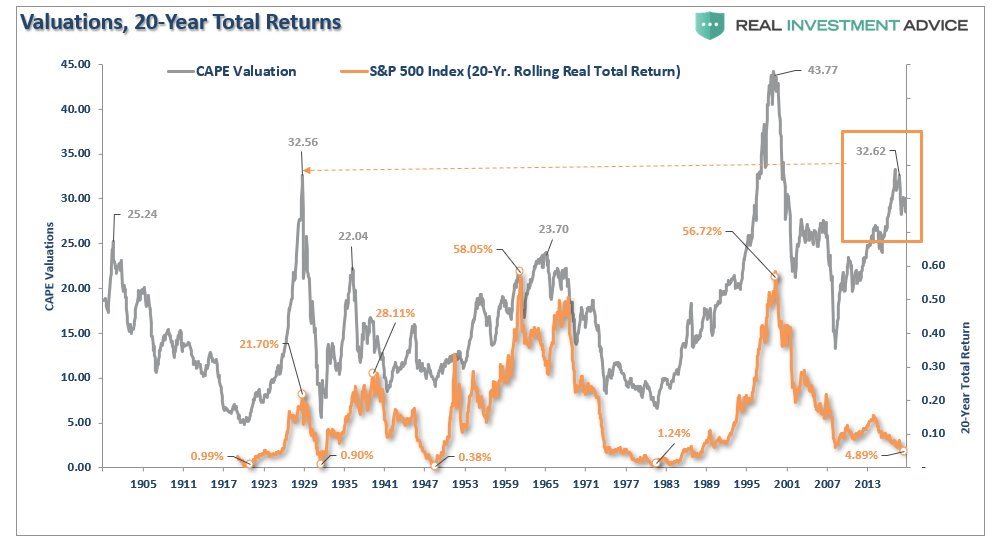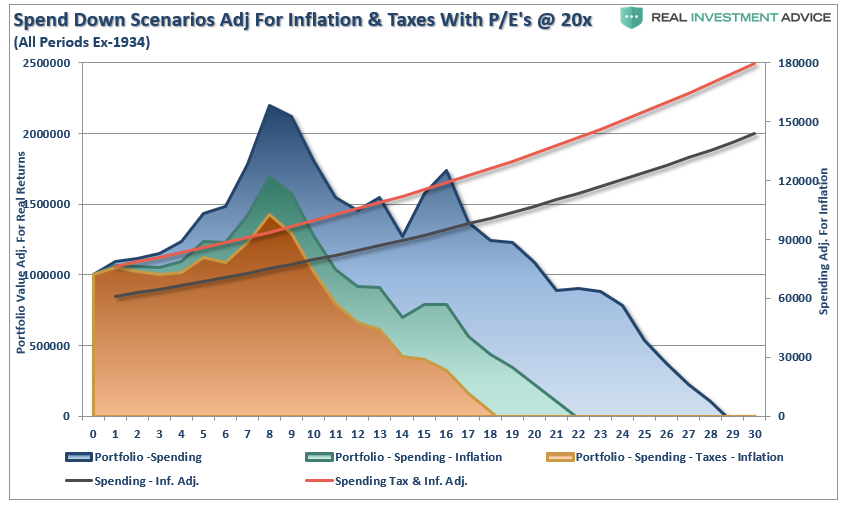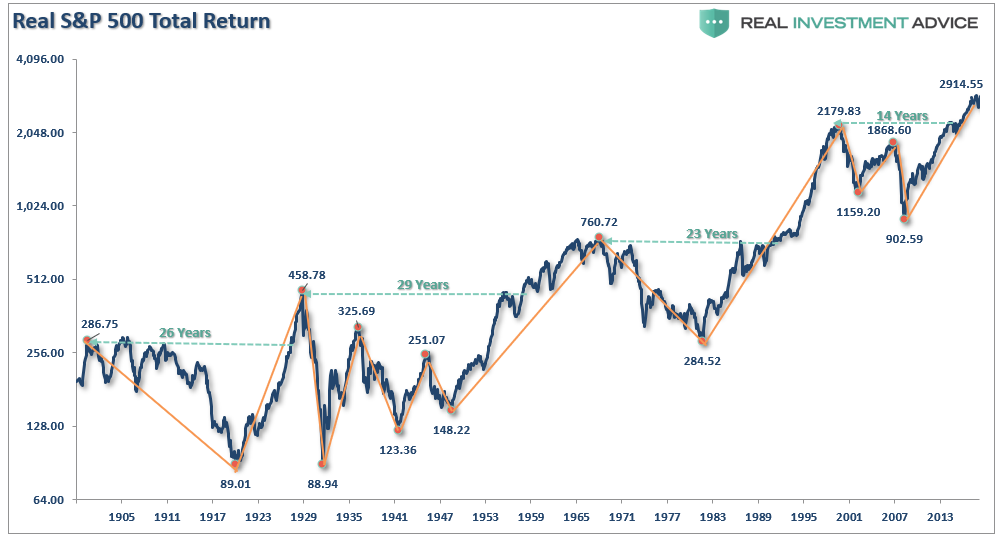via realinvestmentadvice.com
The Differences Between You And An Index
While Wall Street wants you to compare your portfolio to the ‘index’ so that you will continue to keep chasing an index, which keeps money in motion and creates fees for Wall Street, the reality is that you and an index are very different things. This is due to the following reasons:
1) The index contains no cash,
If you maintain cash for expected expenses, taxes, or any other reason, your performance will lag the benchmark index.
2) The index has no life expectancy requirements – but you do.
While it may sound great that if you just hold an index long-term you will generate 8-10% annual returns, the reality is that your investment horizon between accumulation and distribution fall within one “full-market” cycle. Start on the wrong end of a cycle (high starting valuations) and the end result will be far less than advertised.

3) The Index does not have to compensate for distributions to meet living requirements.
At the point in life when you begin withdrawing money to live on, performance is affected by the withdrawals against the value of the portfolio. (Read more here)

4) The index requires you to take on excess risk.
Cullen Roche once penned a salient point:
“Benchmarking is a pernicious thing in financial circles. Not only because it disconnects the way the client and a fund manager understand the concept of ‘risk’, but also because the concept of benchmarking seems to be misunderstood.”
Risk is rarely understood by investors until it is generally too late.
Chasing the S&P 500 index requires you to have your portfolio fully allocated to equity risk, at all times. This vastly increases the “risk profile” of the portfolio which may not be optimal for investors approaching, or in, retirement. (Read more here)

5) It has no taxes, costs or other expenses associated with it.
As noted above, an index does not have to pay taxes on realized gains and dividends, does not have management fees, or other expenses which must be covered. All of these items will lead to underperformance from one year, to the next, versus an index.
6) It has the ability to substitute at no penalty.
In an index, if a company goes bankrupt, the index simply takes it out and substitutes another stock in its position. The index value is then adjusted for the “market capitalization” of the new entrant and the index resumes. However, in your portfolio, given you only have a “finite” amount of capital, when a company goes bankrupt, or losses the majority of its value, you have to sell that stock at a loss and buy the replacement with whatever is left or add more capital.
full article below
Active Vs. Passive & The Simple Reasons You Can’t Beat An Index